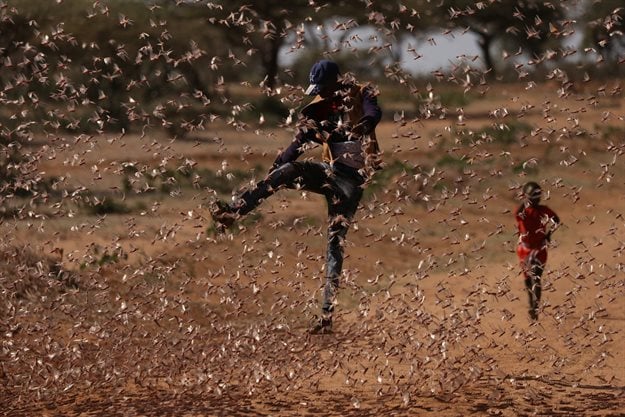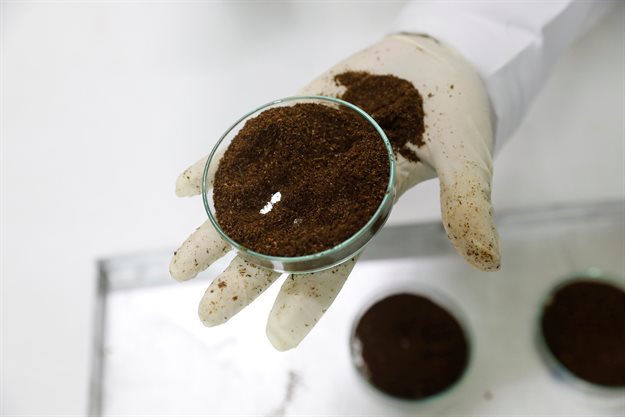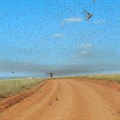Kenya is battling some of the worst locust plagues in decades, but startup The Bug Picture hopes to transform the pests into profits and bring "hope to the hopeless" whose crops and livelihoods are being destroyed by the insects.

A man tries to chase away a swarm of desert locusts in Naiperere, near the town of Rumuruti, Kenya. Reuters/Baz Ratner
Unusual weather patterns, exacerbated by climate change, have created ideal conditions for surging locust numbers which have destroyed crops and grazing grounds across East Africa and the Horn.
Scientists say warmer seas are creating more rain, waking dormant eggs, and cyclones that disperse the swarms are getting stronger and more frequent.
The Bug Picture is working with communities around the area of Laikipia, Isiolo and Samburu in central Kenya to harvest the insects and mill them, turning them into protein-rich animal feed and organic fertiliser for farms.

Philip Ouma, a laboratory manager, holds a dish containing ground desert locusts at the laboratory Spectralab, in Nairobi, Kenya. Reuters/Baz Ratner
"We are trying to create hope in a hopeless situation and help these communities alter their perspective to see these insects as a seasonal crop that can be harvested and sold for money," said Laura Stanford, founder of The Bug Picture.
Devouring crops, other vegetation
In central Kenya's Laikipia, clouds of locusts are devouring crops and other vegetation. The Bug Picture is targeting swarms of 5 hectares or less in inhabited areas not suitable for spraying.
Swarms can travel up to 150km (93 miles) a day and can contain between 40-80 million locusts per square kilometre.
"They destroy all the crops when they get into the farms. Sometimes they are so many, you cannot tell them apart - which are crops and which are locusts," said farmer Joseph Mejia.
The Bug Picture pays Mejia and his neighbours 50 Kenyan shillings ($0.4566) per kilogramme of the insects. Between 1-18 February, the project oversaw the harvest of 1.3 tonnes of locusts, according to Stanford, who said she was inspired by a project in Pakistan, overseen by the state-run Pakistan Agricultural Research Council.

Joseph Mejia, a farmer, holds a flashlight in his mouth while harvesting desert locusts near the town of Rumuruti, Kenya. Reuters/Baz Ratner
The locusts are collected at night by torchlight when they are resting on shrubs and trees.
"The community ... are collecting locusts, once they (are collected) they are weighed and paid," said Albert Lemasulani, a field coordinator with the startup.
The insects are crushed and dried, then milled and processed into powder which is used in animal feed or an organic fertiliser.
Source: Reuters

















